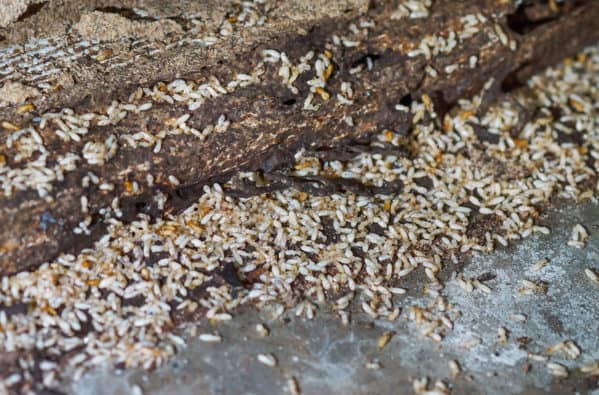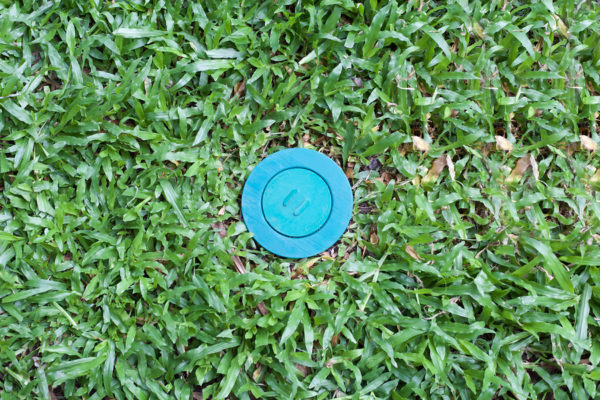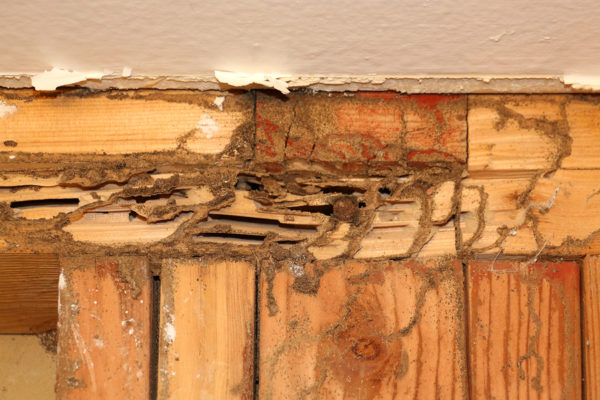READY TO GET STARTED?
REQUEST A FREE ESTIMATE
Fill out the form below or call (888) 466-7849 for a free, no-obligation estimate.

Termites cause billions of dollars in damage each year. Because they work from the inside out, infestations are often not found until significant damage has already been done. Spring marks the beginning of the termite swarming season and these destructive pests are found in most of the United States (except for Alaska). What do you need to know before swarming season starts to help control termites? Find out the answers to many of your termite questions below.
Termites swarm as the weather begins to warm, usually at the beginning of spring or summer and usually after a rain event. Termites swarm when they go in search of a location to establish a new colony. Colonies typically don’t produce a swarm until they have been established for at least 3 years.
If a swarm happens inside your home, most of them will not survive to establish a new colony but it does mean that your home is likely infested. If a swarm happens outside your home or if you notice just a few stragglers inside, your home is most likely not infested but a colony (or multiple colonies) are present nearby.
Swarming termites have one purpose – to reproduce and establish a new colony. In fact, they don’t have biting or chewing mouthparts to cause damage to your home. Several hundred swarmers are produced by each colony but only a small percentage of these actually survive to start the new colony.
Termites have straight antennae and wide bodies without pinched waists. They are usually black or dark brown in color. Swarming termites have wings that are the same length and clear in color. Termites are found in decaying stumps, trees, wood debris, lumber, and other wooden structures. They cause structural damage by eating wood and other cellulose-based products like paper.
Flying ants (also known as carpenter ants) have elbowed antennae and pinched waists. They can be black, brown or reddish in color. They have 2 pairs of wings that differ in size and are tinted brown in color. Carpenter ants also inhabit wood and wood structures; however, they don’t eat wood and therefore do not usually cause any structural damage. They do eat nectar, seeds, other insects, and food debris in and around your home.
Both termites and flying ants swarm as part of their mating process.
The main attractant to termites is food. Termites love to eat anything wood or cellulose-based including lumber, firewood, newspaper, and more. They also like warm, dark places that are undisturbed such as your crawlspace. They also thrive in moist soil, especially around your foundations.
While there are some do-it-yourself options you can do around your home, these are more suitable for termite prevention rather than termite control. Getting rid of termites is a job best left to the professionals. Some things you can do around your home to help prevent termites include:
There are two major types of termite treatment: liquids and baits.
Liquid termite treatments have been around for years. Their purpose is to provide a long-lasting barrier in the soil that keeps termites from entering and infesting buildings. This treatment also helps eliminate termites that are already inside structures as it prevents them from getting back to the soil for supplemental moisture.
Bait termite treatments use a cellulose-based food product combined with a slow acting pesticide. The bait stations are installed below the ground where termites eat the bait and share it with other termites in their colony. This leads to a gradual decline in the termite population infesting the structure.
If you suspect you have a termite problem, contact a professional termite control specialist. A thorough termite inspection by a trained pest control professional is critical in identifying and eliminating a termite infestation from your home.
Lawn Care: How to Keep Your Grass Green in the Summer
5 Ways To Prevent Bed Bugs When Traveling

No matter what season it is, pests will always be in search of 2 things: shelter and food. One place that provides both of these is your home! Pests are influenced by the seasons so their threats change as the weather changes. Different seasons bring different pests in varying stages of their life cycles. It is important to know seasonal pest patterns for your area to make the proper preparations for your home. What can you expect as each season changes throughout the year?
Winter is a time of hibernation and survival for pests. Colder weather triggers a need for most pests to find shelter; some seek shelter outdoors while others will seek shelter indoors. Bees, wasps, and other stinging insects will seek out places in logs or in the eaves of your home. Ants will seek shelter in their nesting sites. Overwintering pests like cockroaches, spiders, and rodents will seek shelter indoors, sometimes in our homes. The key to prevention of winter pests is to prepare your home in the fall.
Spring is a time of awakening and mating for most pests. As the weather warms, pests will emerge from their winter shelters and increase their activity. Pests that hibernate over winter will awaken from their dormant states. The spring rains will drive ants from their nesting sites in search of higher ground. Spring also marks the beginning of swarming season for termites. Most pests will move outdoors in the spring in search of mates.
Summer brings the height of backyard pests that put a damper on our outdoor fun. While we tend to see fewer pests inside our homes, we do tend to see larger numbers of pests in our yards and other outdoor areas. Mosquitoes are especially active in the summer months because of the moisture from spring and summer rains. Bees, wasps, and other stinging insects are also more active in the summer; their nests can often be found on our near our homes.
Fall is a time of preparation for most pests as they get ready for the harsh winter months. Common fall pests include ladybugs, box elders, and spiders. These pests will often invade your home at this time of the year in search of shelter for the coming months. Fall is a good time to prepare your home for those overwintering pests seeking shelter from the winter weather also, like cockroaches and rodents.
No matter the season, there are steps you can take to protect your home from pests year-round:
If these steps aren’t enough or if you already have a pest problem, call a pest control professional who can come and give your home a thorough inspection and help you with a treatment and prevention plan.

Spring is the time of year when termites swarm, emerging to mate and establish new colonies. Unfortunately, these new colonies are often established inside our homes. An average of 5 million US homes are infested each year by termites, causing an average of $5 billion in damage annually. What many people don’t realize is that termite damage isn’t covered by homeowner’s insurance policies. What’s a homeowner to do? One thing to consider is the Sentricon Always Active bait system for termite control. Sentricon is a highly effective, environmentally responsible treatment option for termites. What is included with the Sentricon system?
If you suspect you have a termite problem contact a professional pest control company who can provide you with a thorough inspection and recommend a comprehensive termite treatment and prevention plan.

If you’ve been outside lately you’ve probably seen signs of spring – blooming flowers, pollen that aggravates our allergies, and lots of new insects buzzing around. Another thing that spring brings is swarms – of termites! Termites are present year round but their swarming season is during spring and early summer.
Termites cause billions of dollars in damage to homeowners each year. Here in the Southeast, subterranean termites are the most common types and are particularly destructive. These insatiable eaters can damage not only wooden structures, but have even been known to cause damage to brick and concrete homes as well. Termites can invade your home through cracks and holes as small as 1/32 of an inch!
Swarms are most common in spring and summer because they are triggered by warm, humid weather. Swarming marks the start of a new termite colony. Winged termites leave their nests when they become overcrowded and their isn’t enough food to sustain them. They then take flight and actually reproduce in mid-air. The females will then shed their wings and fall back to the ground. They then go in search of a new location to start their colonies.
Swarmers don’t usually cause any damage but once they establish their new colonies their offspring can cause significant damage – usually within 2 years. If you see flying termites it can signal one of two problems:
If you see winged termites inside your home this is a good indication that you already have an established termite colony inside or that there is existing damage already.
What can you do to prevent termites from coming into your home? Check out these tips to keep the termites out!
As always, if you suspect you have termites or find signs of damage, contact a termite control company who can come in and do a thorough inspection and set you up with a comprehensive treatment plan.

With the weather thankfully getting more spring-like, it’s time for a good deep-clean of your home. While a good spring clean is great for your spirit, it will also aid in keeping pests out of the house, along with your quarterly pest service. That way, you get to enjoy a pest-free spring!
Ants, pantry pests, and other common spring pests will seek to invade your kitchen where they will find food and water with ease. A deep clean of your pantry and counters can greatly reduce the occurrence of pests. If it is feasible, clean out from behind your appliances; food will have fallen that pests will find. Also, place your trash can away from doors that lead in from outside and away from windows.
Roaches and silverfish tend to be attracted to bathrooms due to the excess moisture. Reducing sources of water is the best solution to ward off an infestation. Check around tubs, sinks, and toilets for any leaks, and wipe off standing water on any surfaces.
The perfect hiding place for pests is often your basement. Mice, spiders, and many others like the dark corners to hide from the outside. Instead of using cardboard boxes for storage, go for plastic tubs with secure lids. Also, make sure to seal any found cracks; mice only need ¼” opening to enter your home!
A spring clean of the exterior of your home is crucial. Start with moving any plants and vegetation away from your home to make it harder for pests to come in. Be sure to clean out clogged gutters to eliminate another pest hiding place. You may want to consider installing gutter guards to avoid the possibility of clogged gutters. Other tips to remember: dispose of leaf piles properly and keep grass cut low.
If you suspect a pest problem in your home, contact a pest control company. They will be able to evaluate your home, identify what kind of pest you are having issues with, and set you up with a comprehensive treatment plan.